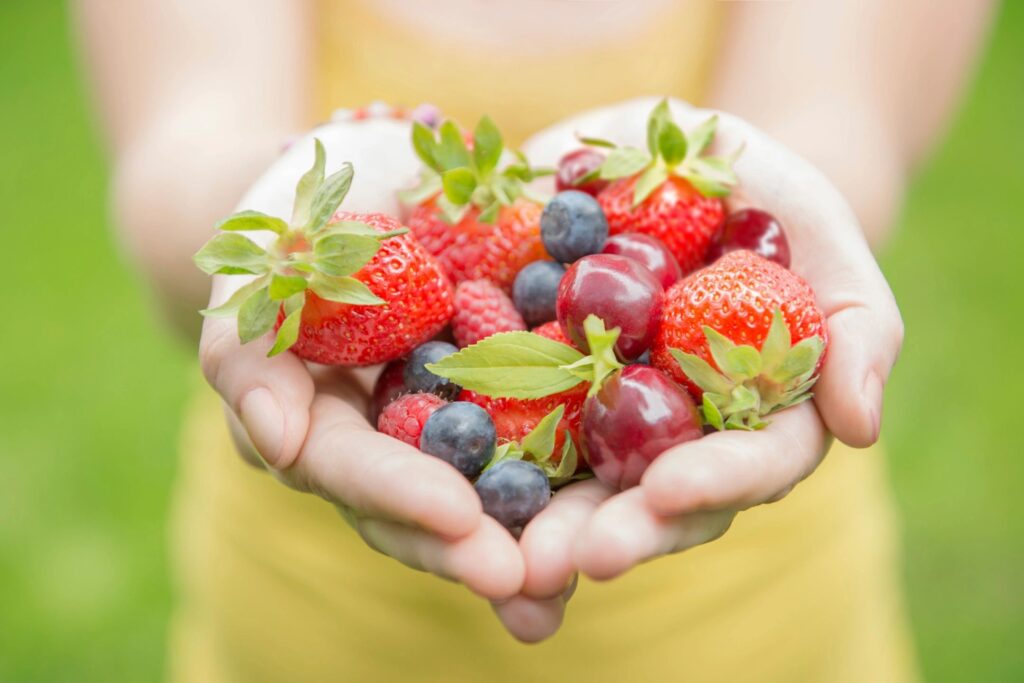Tips for Making the Most Out of Your Fresh Fruits and Vegetables

This article originally appeared in the June issue of LIMITLESS Magazine.
We’ve all done it—racked up a glorious array of produce at our local farmers market and grocery store and then watched as our avocados rotted on a windowsill or our raspberries or strawberries developed a yucky mold before we could enjoy their fresh sweetness.
With the month of June designated as “Fresh Fruit and Vegetable Month,” what better time to get a refresher on the best way to store your colorful goodies, build a more enticing salad and learn how to add more fruits and veggies into your eating plan?
Store your fresh food properly
Know the best way to store your food.Root vegetables (such as potatoes, carrots and turnips) are best stored in a cool, dry place. They will last up to a month if stored properly. Store your foods in complete wholeness, otherwise you will break apart the cells and they won’t last as long. Avoid placing fruits or veggies in airtight bags as this will speed up decay. Keep fruits and vegetables with the right “partners.” Some forms of produce give off high levels of ethylene gas, which is a ripening agent. High-ethylene producers include apricots, apples, avocados, cantaloupe, peaches, plums, pears and tomatoes, among others. It’s best to not store these fruits and vegetables with anything that is “ethylene sensitive,” such as unripened bananas, spinach, cucumbers, carrots, green beans, kale, raspberries and watermelon. Greens in particular are very sensitive to ethylene gas.
Make a heart-healthy salad
Let’s be honest, sometimes salads can get a bit . . . boring. But they are a good way to add extra fruits and vegetables into our diet, and there are some pretty creative “salad in a jar” tutorials floating around out there. (Just remember to always put the dressing on the bottom of the jar to avoid making the rest of your salad a soggy mess when it’s time to eat). Help your salad pack a punch by starting with a healthy fiber, such as quinoa or brown rice. Next, top with leafy greens such as kale, spinach, romaine or arugula. Layer in other chopped vegetables like tomatoes and cucumbers. Find a nice, lean protein (think chicken, goat cheese, chickpeas, hard-boiled eggs, etc.) and then top with a healthy fat. Healthy fats include salad dressings made from olive oil, nuts, or seeds (no more than ¼ cup of nuts or seeds because they are higher in calories and fat).
Sneak in more fruits and veggies
According to a recent study by the Centers for Disease Control, only 1 out of 10 Americans eat enough fruits and vegetables. With the USDA recommending five to nine servings of these items daily, it can seem a daunting task. Incorporating a few smart swaps can help you meet those daily guidelines. Instead of rice, try using any number of riced vegetables out on the market as a base for stir-fry or as a side dish. You can purchase packages of cauliflower and broccoli already riced, both in the fresh and frozen sections of the store. Similarly, use vegetables noodles in place of pasta, such as ribbons of fresh zucchini or carrots. Instead of mayonnaise for a sandwich, mash up an avocado, add in some salt and lemon juice, and use this spread as a healthy replacement. Fold fresh or frozen berries into oatmeal or yogurt and chop up veggies to add into an omelet or a frittata. You can also use fresh fruits and vegetables in smoothies with plain non-fat Greek yogurt for a protein-packed treat.
Summertime is a great time of year to try new types of foods, visit local farms to pick berries and get creative with meal planning. Making sure you store your foods correctly will help you make the most out of your finds.
Sidebar:
What’s in season right now?
Here are a just a few of the fruits and vegetables you’ll find available in the summer:
- Apricots
- Beets
- Bell Peppers
- Blueberries
- Butter Lettuce
- Corn
- Cucumbers
- Eggplant
- Honeydew Melons
- Lima Beans
- Squash
- Strawberries
- Tomatoes
- Watermelon
- Zucchini
Source: Produce for Better Health Foundation